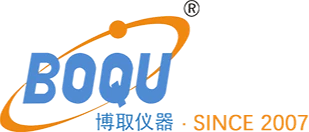Expert in Water Quality Measurement and Water Treatment Project Since 2007
How to Calibrate Your Ultrasonic Water Level Sensor for Maximum Accuracy
Understanding Ultrasonic Water Level Sensors and Their Importance in Various Applications
Ultrasonic water level sensors are highly essential devices used in different industries and applications where accurate water level measurements are required. From wastewater management to agricultural irrigation systems, these sensors are utilized to ensure efficient and precise monitoring of water levels. To achieve maximum accuracy, it is crucial to calibrate these sensors correctly. In this article, we will discuss the calibration process of ultrasonic water level sensors, step-by-step, highlighting the importance of each stage for achieving optimal accuracy.
The Basics of Ultrasonic Water Level Sensor Calibration
Calibrating an ultrasonic water level sensor involves configuring the device to ensure it correctly detects the water level within a specified range. The process mainly involves determining the sensor's environmental factors, measuring the speed of sound in air and water, and adjusting the sensor's parameters accordingly. Calibration is a vital step to eliminate any potential errors caused by external factors, equipment limitations, or installation conditions.
Steps to Calibrate an Ultrasonic Water Level Sensor
Step 1: Understanding Environmental Factors
Before starting the calibration process, it is crucial to consider environmental factors that might affect the accuracy of the sensor. Variables such as temperature fluctuations, electrical interference, humidity levels, and air pressure changes can all impact the readings. By identifying and accounting for these factors, we can ensure more accurate calibrations.
Step 2: Determining the Speed of Sound
To accurately measure the water level, the speed of sound in both air and water must be determined. This can be done by placing the sensor at a known distance above the water level and measuring the time it takes for the ultrasonic pulse to travel and return. By utilizing multiple data points and calculations, the speed of sound in both media can be accurately determined.
Step 3: Adjusting Calibration Parameters
Once the speed of sound in air and water is determined, the calibration parameters of the ultrasonic water level sensor need to be adjusted. These parameters include the distance between the sensor and water surface and the time delay for the pulse to travel from the sensor to the water and back. By adjusting these parameters based on the measured speed of sound, the sensor will provide more accurate water level readings.
Validation and Fine-Tuning
After adjusting the calibration parameters, it is essential to validate the accuracy of the sensor. This can be done by comparing the readings obtained from the calibrated sensor with a reference or manual measurements. If any discrepancies are found, further fine-tuning of the calibration parameters should be performed to achieve the highest level of accuracy possible.
Maintenance and Periodic Recalibration
Once the ultrasonic water level sensor is properly calibrated, it is crucial to perform regular maintenance and periodic recalibrations. This ensures that the accuracy of the sensor is maintained over time, especially considering factors such as sensor drift, environmental changes, or any physical alterations to the installation site.
In conclusion, calibrating an ultrasonic water level sensor correctly is crucial for achieving maximum accuracy and reliable water level measurements. By understanding the environmental factors, determining the speed of sound, adjusting calibration parameters, validating and fine-tuning the sensor, and maintaining periodic recalibrations, users can ensure optimal performance of their ultrasonic water level sensing systems, leading to efficient water management and improved accuracy in various applications.
Contact Us
Office Add:No. 118 Xiuyan Road,Pudong New Area,Shanghai,Zip Code:201315,China
Contact us right away
BOQU Instrument focus on development and production of water quality analyzers and sensors, including water quality meter, dissolved oxygen meter, pH sensors, etc.
